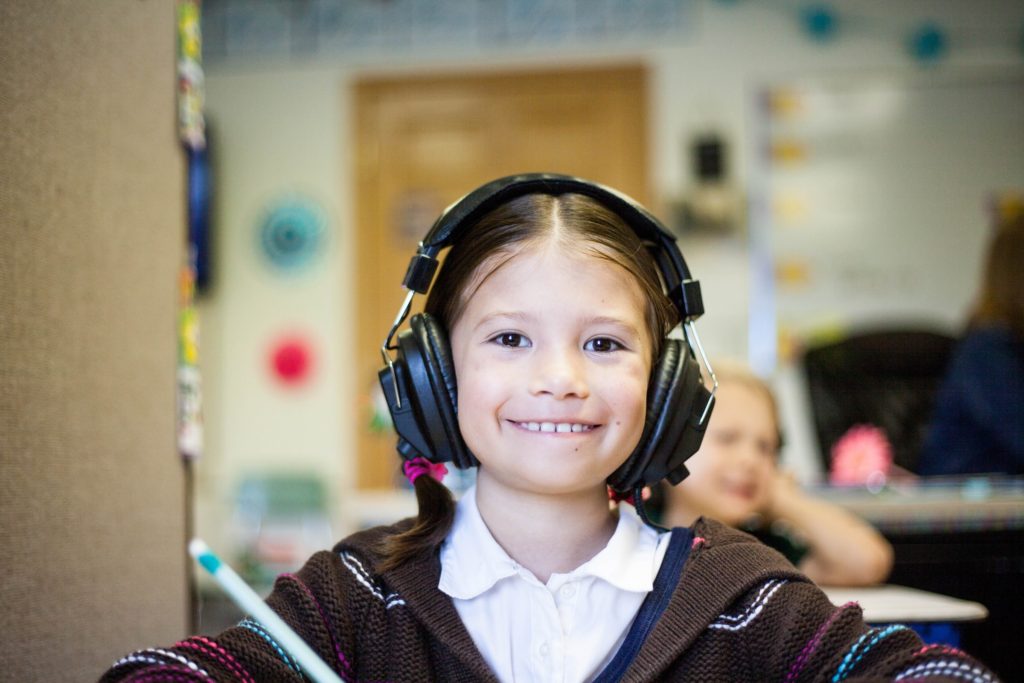Table of Contents
Definition of Language Processing Disorders
The learning difficulty often simply listed on student profiles as “Language Processing Disorder” actually covers a wide array of conditions and symptoms that center around a student having difficulty processing language which inhibits their ability to learn in a classroom.
There are two main subtypes of Language Processing Disorders: Expressive Language Processing Disorders, which affect a person’s ability to use language to express themselves, and Receptive Language Processing Disorders, often also called Auditory Processing Disorders, which affect a person’s ability to understand what is being said to them.
These two main types do not fully cover the spectrum of difficulties faced by students who have Language Processing Disorders and many students have issues in both the expressive as well as receptive domains. Many also try to distinguish Auditory Processing Disorders (APD), which are termed as being problems with the perceptive mechanisms of hearing in the brain versus Central Auditory Processing Disorders (CAPD) which are issues in further processing the auditory sensory information in the brain into comprehensible language.
According to a research study on the various subtypes of receptive Language Processing Disorders, “Difficulty in validating CAPD as a diagnostic label is due in large part to use of the unimodal inclusive framework, which has biased the diagnosis to favor sensitivity of test results over documenting the specificity of the deficit.” (Cacace and McFarland)
In other words, because the current tests for learning difficulties focus on looking for symptoms instead of the source of the symptoms, they run the risk of being self biased in deciding the symptoms they see are evidence of whichever condition that test is designed to search for. Because the tests for learning difficulties are based on questionnaires and tests that are designed to identify symptoms they experience rather than measuring any objective difference in the brain, they can often confuse diagnoses with similar symptom profiles.

As an example, if colds and the flu were diagnosed the same way as learning difficulties, the questionnaires might ask about feelings of tiredness, coughing, and a sore throat and the tests would look for increased mucus production and heightened immune response.
Because both conditions often check off many of these boxes, a person with a cold or the flu would get a positive diagnosis in either test. This would be a huge problem as the different sources of the problem, a bacteria or a virus, require dramatically different treatment protocols. In the same way, many learning difficulties, not just Language Processing Disorders, focus on symptom management rather than alleviating the source of the issues.
This may be the best approach however, as according to research into treatments for Auditory Processing Disorders found that “there is no evidence that auditory interventions provide any unique therapeutic benefit” and so they suggest that “clinicians should treat children who have been diagnosed with APD the same way they treat children who have been diagnosed with language and learning disabilities.” (Kamhi)
Because current medical science can not directly “fix” the parts of the brain that process language, clinicians, as well as teachers, should focus on how they can help people who have Language Processing Disorders overcome their specific symptoms instead of focusing on getting an appropriate label.
Identifying Language Processing Disorders in the Classroom
As mentioned, it is important to not just note that a student struggles with language in a general sense when seeking to identify a Language Processing Disorder, but also to note whether the trend is receptive, expressive, and any other unique patterns of difficulty the teachers and school psychologists note. This will be critical in deciding which approaches to utilize as each is used to shore up a different aspect of language processing.
However, teachers who teach students with various Language Processing Disorders often describe their students as…
- Having difficulty recalling what someone has said.
- Misinterpreting instructions.
- Not understanding language based jokes.
- Having trouble concentrating or listening in a noisy environment.
- Having a limited vocabulary for their age.
- Seeming shy or uncomfortable in social situations or when doing presentations.
- Having trouble finding “the right word” when expressing themselves.
- Making many simple grammar mistakes when speaking.
5 Targeted Interventions for Students with Language Processing Disorders
1: Give them written text or a picture for listening activities.
One of the most difficult tasks for students with Receptive Language Processing Disorders is listening to an extended audio clip and being required to remember details from it to answer questions. Because of this, they may need a scaffold for these types of activities until they are able to build up their skills and be prepared to understand the context of the audio better.
The first step could be to provide the student a written copy of the text for the audio clip and allow them to read along as they listen. This will allow the student to utilize two pathways to get the information into their brains. The first being the auditory learning pathways that they are struggling with.
The second, however, would be the parts of the brain involved in reading. While some students who struggle with language processing disorders also have issues with reading, giving the information two chances to be processed properly is better than one, even if both pathways are compromised.
Once the student is ready for the next level of their scaffolding, the teacher could provide a picture depicting the scene the audio clip is set in rather than the full written text. While a static picture won’t give the students a direct way to gather the information from the audio clip, it does give their brain a framework to imagine and process what they are hearing better.
Teachers should instruct the student to use the ideas and characters shown in the picture to help visualize what they are hearing. This will help them to have a scene in their head to consider the auditory information they are receiving in a concrete way utilizing other sensory and processing areas of the brain.
This scaffolding can mindfully be further deconstructed by giving the student less and less helpful pictures which will require them to slowly improve their brain’s visualizing ability and empower them to become more independent in listening tasks. While they may never fully be able to do auditory tasks as quickly or accurately as their peers, using slowly removed scaffolding strategies that employ other areas of the brain will allow the student to slowly build up pathways that work better due to the way that their individual brain works.
This will also slowly build the confidence of the student and show them that just not being naturally inclined in an area doesn’t mean that they can’t learn and improve in that domain of their lives. All students, with or without a Language Processing Disorder, can improve in their weaknesses and utilize their strengths to complete work in their own way.

2: Write instructions on the board.
Another simple and straightforward way to help one of the most common issues students with Receptive Language Processing Disorders face is to write any instructions teachers plan to give on the board before speaking them aloud. Similarly to the suggestion above, giving students multiple ways to access the information just gives their brains a second chance to process what they are to do properly. Before using a quieting or transition technique, teachers can number or bullet point their instructions and gesture to them when giving them orally to the class.
Another reason to try this tip whether or not a teacher is sure they have a student with Language Processing Disorders is that listening to oral instructions is a common difficulty for many learning difficulties from ADHD to problems with Executive Function. Even most typically developing students seem to be struggling more and more with their attention span.
Whether they just weren’t paying proper attention, they were unable to process the information they heard properly, or they couldn’t understand the words due to their language issue, written instructions serve as a secondary sensory pathway for learning. In addition to this, they also remain accessible to students much longer than the teacher’s voice.
With auditory language, if it wasn’t processed correctly or attended to properly in the exact second it was said, there is no second chance or way to go back without the teacher repeating their instructions again. With written instructions, the student has an embarrassment free way to catch back up with what they are supposed to be doing.
3: Give students with processing issues time to speak.
Students who struggle with Language Processing Disorders often hate speaking up in class and especially dread giving presentations to the whole class. Students with Expressive Language Processing Disorders often struggle to find words they are looking for resulting in long pauses in their speaking.
They also often make many grammar mistakes that may feel embarrassing for self-aware students. These issues will often lead to students being so embarrassed that they get severe anxiety or stage fright that further impact their ability to impart information in the time they have.
When having presentations, teachers should try to be flexible with exact timings so that students with Language Processing Disorders don’t feel rushed, embarrassed, and ill-equipped to fit in everything they need to include in the allotted time. Similarly, teachers should avoid rushing or finishing students’ sentences for them when they are having trouble.
This often deflates the student further as it can make them feel like their conversation partner is feeling impatient with them and that they are more linguistically capable as they knew the words to use before the struggling speaker themselves. Simply nodding, smiling, and waiting will show them that their conversation partner is engaged in listening to them, and isn’t feeling impatient or tired of “dealing with” them.
While there is always a balance in this, as silences that are too long will also not help the student to build their confidence, giving students brains a chance to work, process, and formulate a response will help bolster their entire language system. Practice makes perfect applies to any skill whether the student is naturally suited to the task or has major hurdles to overcome first.
4: Choose considerate questions to call on them for.
It can also be kind for the teacher to consider carefully which questions to call on the student who has Language Processing Issues. Some questions require more linguistic logic and are worded in a tricky way. Avoiding giving students with Language Processing Disorders these types of questions, especially in front of the whole class, will help avoid total breakdowns where the student totally gives up because the question is beyond their reach.
While the teacher shouldn’t always pass low-ball questions off to students with learning difficulties, being aware of which questions might pose more of a challenge to various students will help when also considering how much they understand the content of the question being asked as well as simply how the student is feeling that particular day.
5: Consider a Speech-Language Therapist.

Some students may not have enough time in class to specifically target their linguistic difficulties as well as cover all of the course content appropriately. This might be a signal that the teacher should consider having the student seek a formal evaluation and begin work with a licensed Speech-Language Therapist (SLT).
SLTs can work together with classroom teachers and other learning support professionals to devote more time to shoring up the students language abilities while also developing targeted strategies to utilize in class when the student encounters common difficulties. Even if the student doesn’t go for the formal evaluation, a brief conversation with the school’s SLT can spark ideas and just be another adult to discuss difficulties with and be assured of currently implemented approaches.
Want more like this? Make Lab to Class a part of your weekly professional development schedule by subscribing to updates below.
References
Cacace, Anthony T., and Dennis J. McFarland. “Central Auditory Processing Disorder in School-Aged Children.” Journal of Speech, Language, and Hearing Research, vol. 41, no. 2, 1998, pp. 355–373., https://doi.org/10.1044/jslhr.4102.355.
Kamhi, Alan G. “What Speech-Language Pathologists Need to Know about Auditory Processing Disorder.” Language, Speech, and Hearing Services in Schools, vol. 42, no. 3, 2011, pp. 265–272., https://doi.org/10.1044/0161-1461(2010/10-0004).



